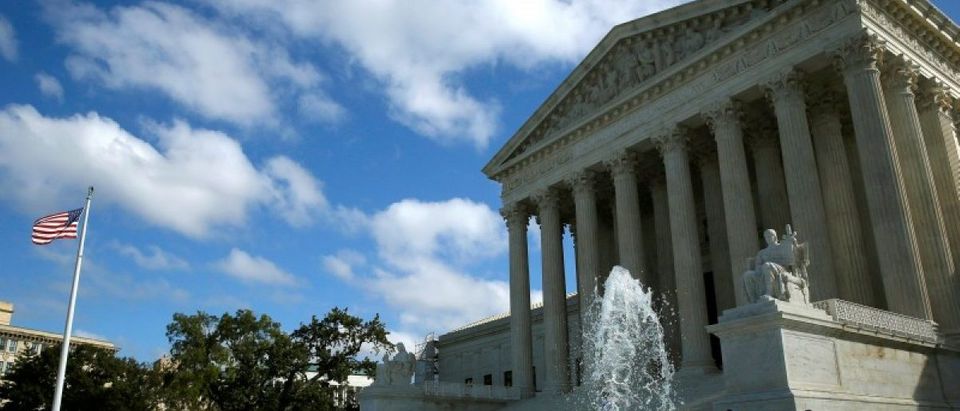Shaping outcomes at the U.S. Supreme Court is no longer simply accomplished through the strength of a lawyer’s argument. Two scholars show that a new litigation strategy is essential for success at the high court.
A forthcoming article in the Virginia Law Review by William & Mary Law School professors Allison Larsen and Neal Devins track the emergence of the so-called “amicus machine,” a system of norms, preferences, and incentives which leads a small cadre of specialized practitioners to work together to produce a deluge of amicus briefs which have a meaningful effect on outcomes.
An amicus, or “friend of the court” brief, is a legal position paper filed with the justices by parties interested in a particular case. For example, the American Civil Liberties Union may wish to present its views to the Court in a search and seizure or free speech case, and can do so by way of an amicus brief. A party which files an amicus brief is referred to as an “amici.” Last term, amici filed 863 briefs with the Court, an 800 percent increase from the 1950s and a 95 percent increase from 1995.
Writing at SCOTUSblog, Larsen and Devins explain:
“After interviewing over two dozen Supreme Court advocates, we offer a new description of the origin of many amicus briefs today. The prevalent account portrays motivated interest groups urging their policy positions on the justices in much the same way they lobby Congress.”
Interest group posturing is not new or unusual at the Court, but a major revelation comes from their survey of new lawyering strategies. They write:
“But even though the rise of amicus filings is partially linked to interest-group activity, the most notable aspect of the growth and, in particular, the influence of amicus filings is the dramatic spike in activity by the so-called Supreme Court bar. Today, elite, top-notch lawyers help shape the court’s docket by asking other elite lawyers to file amicus briefs supporting their petitions for certiorari. When the court takes a case, these same lawyers strategize about which voices they want the court to hear, and they assign the chosen groups to other Supreme Court specialists, who craft amicus briefs designed to bolster their chances of victory.”
One practitioner elaborated on this strategy and explained that a sophisticated amicus strategy involves both a “wrangler,” — a party who will recruit the right amici — and a separate “whisperer” who will coordinate amici’s message. This very strategy, they note, was employed to good affect in the second ObamaCare case, King v. Burwell, in which the federal government successfully mobilized dozens of high-profile amici to file briefs in support of the administration. Two of those briefs were cited by Chief Justice John Roberts in his ruling upholding the law. (RELATED: Feinstein Will Become Democrat Point Person On Judicial Nominees Under Trump)
Larsen and Devins attribute the ascent of the amicus machine to three factors. The first is the emergence of the Supreme Court bar, a cohort of well-credentialed lawyers who possess a virtual monopoly on advocacy before the Court. As these lawyers solicit and prepare briefs, they bolster their own reputations, ranks, and propagate the amicus machine. Second, the justices have become more interested in data and expert feedback in recent years. Lastly, the justices themselves help entrench the amicus machine, as they prefer an elite, specialized bar of lawyers supplemented by expert information.
There are several attending benefits. The amicus machine extends credibility to parties which might otherwise struggle to earn the Court’s respect. It also helps law clerks navigate the cert pool, the steady surge of petitions the Court must review. The high court receives about 8,000 petitions each year, and amicus briefs help direct attention to the 80 or so cases the justices agree to review.
Nonetheless, the pair note there are obvious pitfalls to this strategy. The amicus machine entrenches a small cadre of practitioners as the full-time Supreme Court bar. In addition, this strategy requires parties to invest a great deal of resources in staging a successful argument, which could have an anti-democratic effect. Still, Larsen and Devins conclude the benefits of the amicus machine outweigh the costs and dangers.
Send tips to kevin@dailycallernewsfoundation.org.
All content created by the Daily Caller News Foundation, an independent and nonpartisan newswire service, is available without charge to any legitimate news publisher that can provide a large audience. All republished articles must include our logo, our reporter’s byline and their DCNF affiliation. For any questions about our guidelines or partnering with us, please contact licensing@dailycallernewsfoundation.org.



